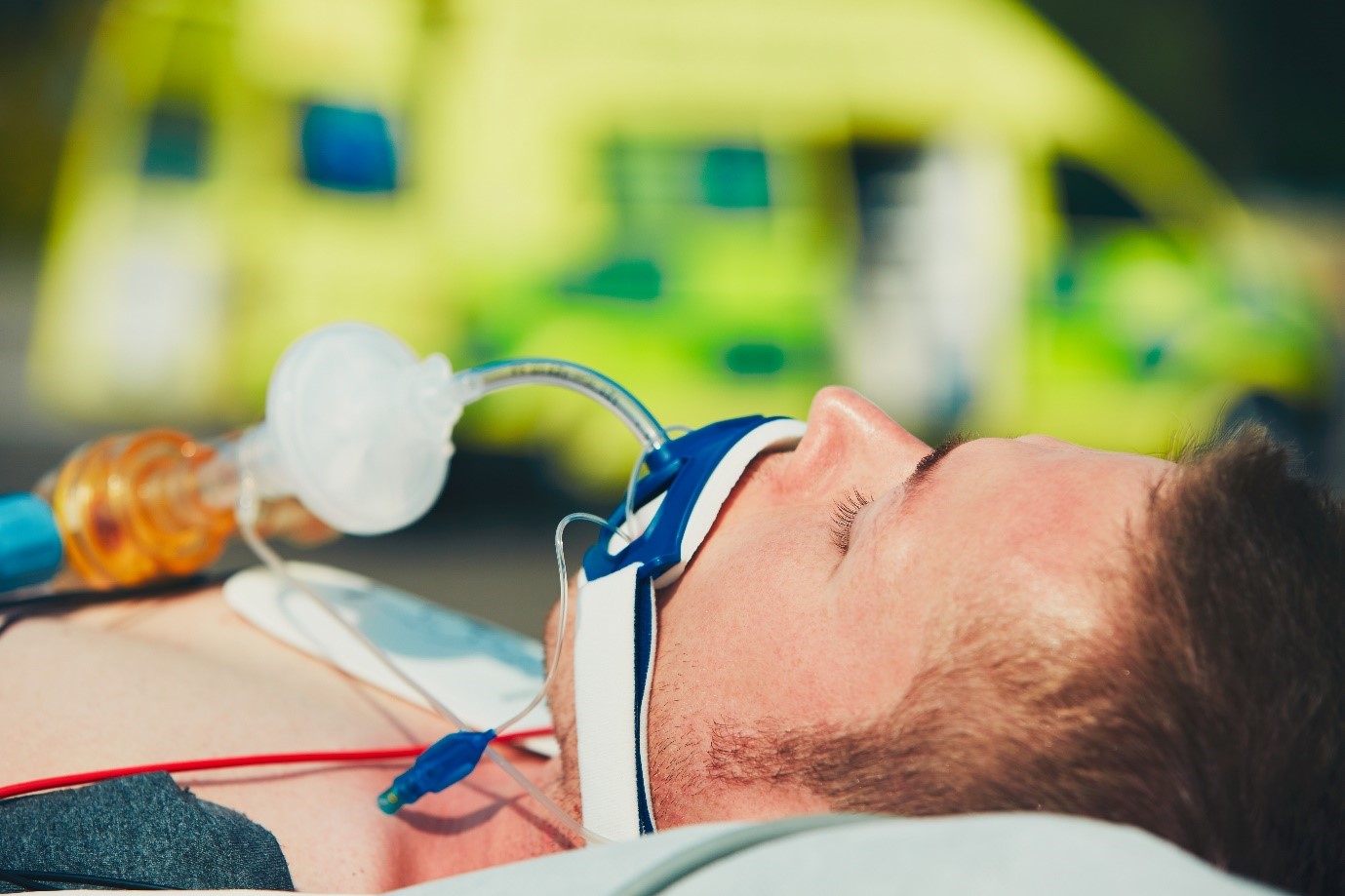Carbon monoxide safety considerations and treatment
Scene management and suspecting Carbon Monoxide
 Where Carbon monoxide poisoning may be a consideration, it is important to consider your own safety and health. An enclosed area with a high concentration of carbon monoxide can quickly cause unconsciousness. If at any point you suspect Carbon monoxide, you should look to exit the area as quickly as possible and get/advise your patient, and any home occupants, to leave the property as well. If there are further complications, consider the Fire Service or HART who can enter in breathing apparatus (BA). If for whatever reason you were unable to leave the area, open any windows or sources of ventilation available, and if possible turn off any appliances that may be causing Carbon monoxide. It is important that you conduct and act upon your own risk assessment in the situation and call for specialised resources when needed.
Where Carbon monoxide poisoning may be a consideration, it is important to consider your own safety and health. An enclosed area with a high concentration of carbon monoxide can quickly cause unconsciousness. If at any point you suspect Carbon monoxide, you should look to exit the area as quickly as possible and get/advise your patient, and any home occupants, to leave the property as well. If there are further complications, consider the Fire Service or HART who can enter in breathing apparatus (BA). If for whatever reason you were unable to leave the area, open any windows or sources of ventilation available, and if possible turn off any appliances that may be causing Carbon monoxide. It is important that you conduct and act upon your own risk assessment in the situation and call for specialised resources when needed.
Due to Carbon monoxide being colourless and odourless, it can be very difficult to be aware of the danger present. Some considerations for signs of Carbon monoxide include:
- History of Carbon monoxide alarm activation
- A history of headaches
- Multiple members of the household being affected
- A history of feeling better when outside the property
- A call to multiple patients in one household with no apparent cause
- A history of faulty boiler/chimney/fireplace/etc
Carbon Monoxide treatment
When looking at the treatment of a potential Carbon monoxide poisoned patient, remove them from the area to ‘clean’ air and apply 100% Oxygen therapy. 100% Oxygen therapy helps to dislodge the carboxyhaemoglobin bond over time, eliminating the danger of asphyxiation to tissues and cells. The patient may be in a very poor state, requiring you to support any CABCDE deficits and transport rapidly to the hospital. In a majority of cases, treatment and/or review at the hospital is advised as you can’t assess the patients’ level of Carbon monoxide. HART and other special responders may carry Carbon monoxide level detecting devices which can help in your management of a patient. Any pregnant patients should be taken to the hospital as the growing foetus may be affected by Carbon monoxide poisoning.
Special consideration should be made when assessing pulse oximetry as a false reading may be present. This is due to its inability to differentiate the saturation makeup of the haemoglobing. For example, if the heamoglobin is saturated with 40% Carbon monoxide and 60% Oxygen, it will read as 100%.